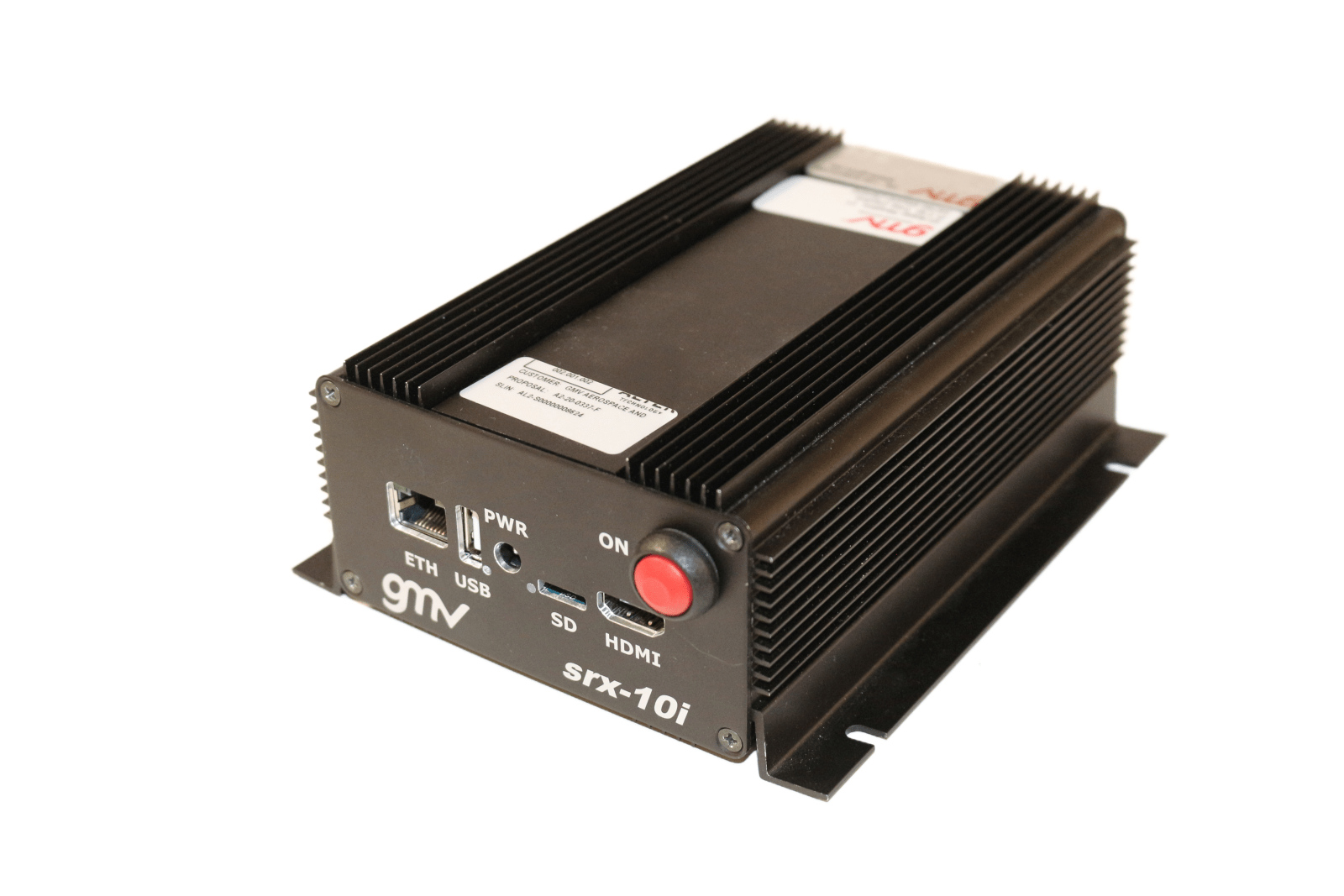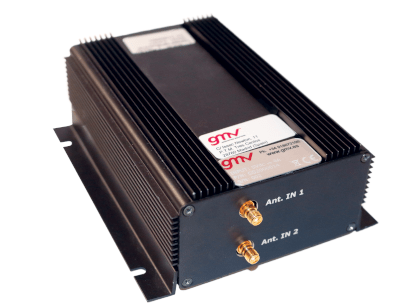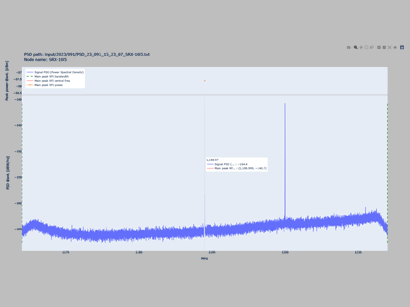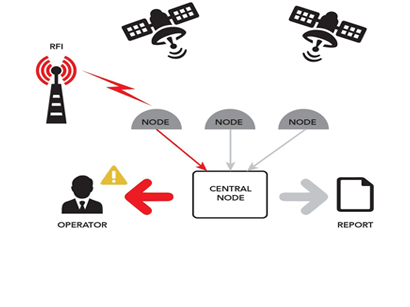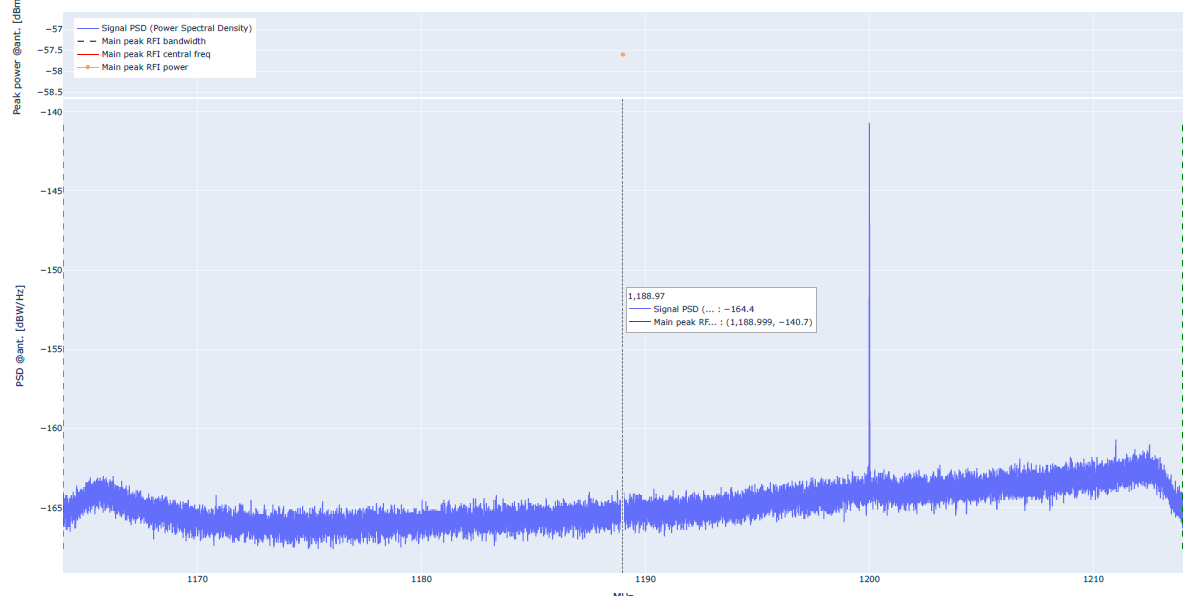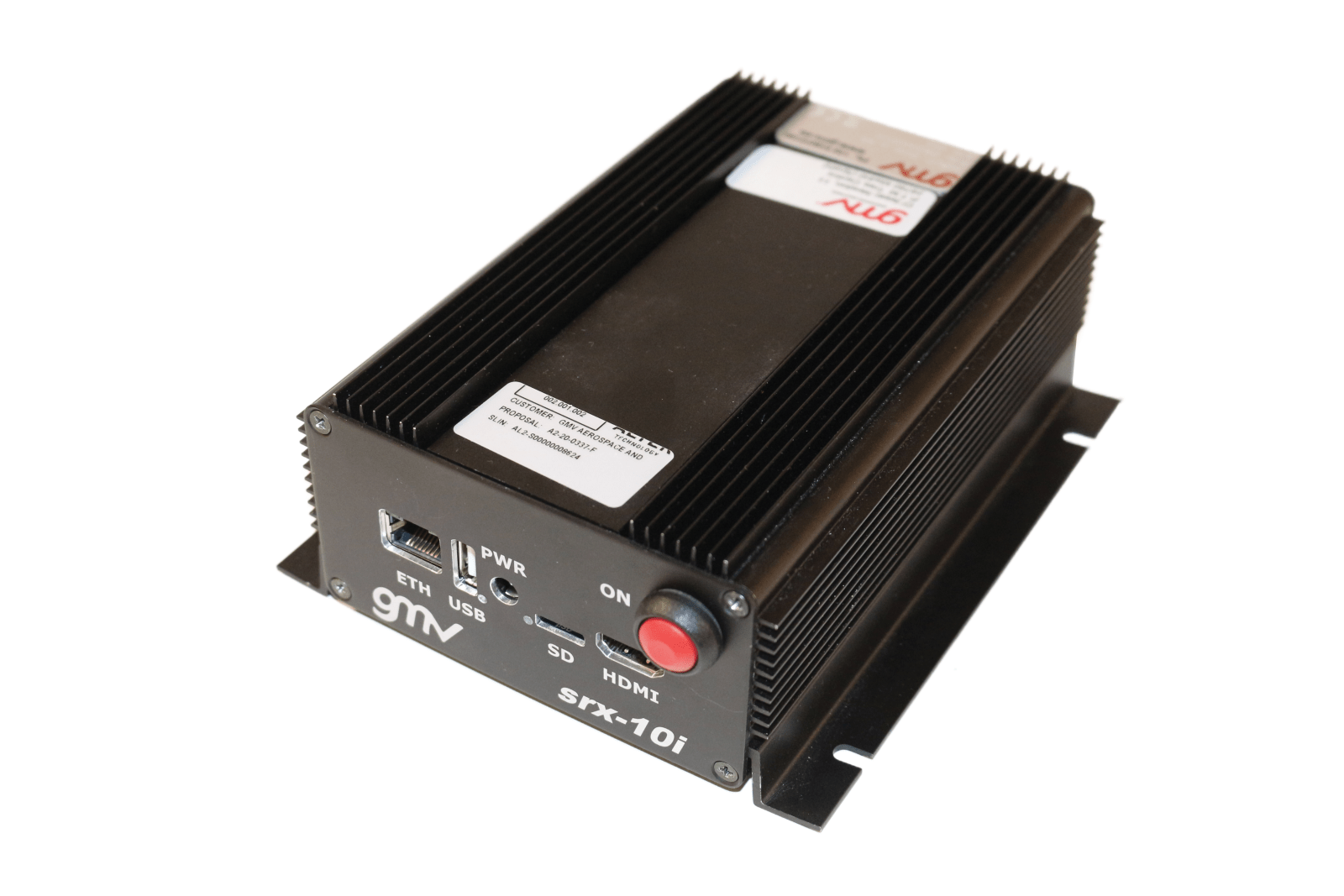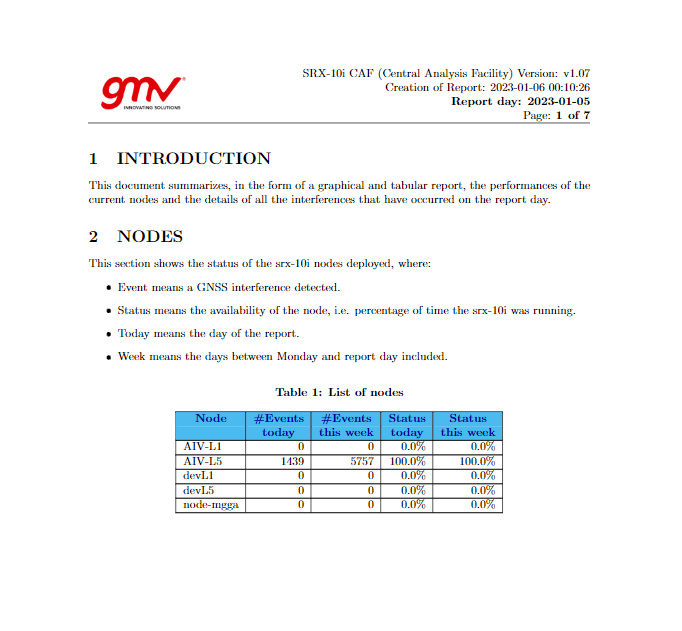SRX-10i
GNSS spectrum monitoring to protect what's most valuable
GNSS spectrum monitoring solution
SRX-10i is a competitive solution for simultaneous monitoring of up to two bands of the GNSS spectrum including real-time interference detection and analysis.
Global Navigation Satellite Systems (GNSS) are a critical component to ensure that the following services are implemented effectively:
- Telecommunications (5G)
- Maritime and air navigation
- Fleet tracking and autonomous driving
- Energy infrastructure and network timing
- Inventory management (IoT)
in more than 10 airports, in addition to its proven capabilities in seaports.
For details on the licensing conditions and prices, please contact [email protected].
The SRX-10i system is composed of one or more nodes depending on the coverage needs of each customer. Each node includes an RF front-end and the necessary software to perform real-time spectrum monitoring.
The system also includes the central analysis node to store, visualize, and manage the interferences received by the nodes.
The system is designed to be modular, with an easy-to-use user interface and seamless integration into each customer's information systems.
The advanced system options include:
-
Configurable notch filter to eliminate persistent interference
-
Binary output of raw data for post-processing
-
Calibration of each unit in terms of absolute power, as well as linearity and spectral purity
The SRX-10i core system includes a built-in autonomous interference event monitor. This monitor informs the operator about the interference detected by the remote local monitors. Based on the information provided, the operator can order detailed analyses of the reported interference events.
The system generates three types of alarm messages:
- Interference Alarms: alarms sent by the sensors when they detect local interference.
- Life Signal: this is a keep-alive message sent by the sensors to indicate that they are running and that the communication link is operational.
- Station Unavailable: these alarms are generated internally by the central analysis service in case the life-signal from a given remote station is not received in due time.
According to Eurocontrol, 38.5% of European en-route traffic operates in regions affected by radio frequency interference (RFI). This increase in the number of potential GNSS system failures has compromised the benefits of using GNSS-based procedures in the aviation industry.
In addition, radio frequency interference has consequences in:
-
Network efficiency as many aviation procedures will have to rely on traditional radio-assisted procedures.
-
Air traffic management and pilot workload.
-
Air navigation service providers because they will need continued investment in maintaining alternative communication, navigation and surveillance systems to mitigate GNSS system outages.
SRX-10i has been successfully rolled out in the airport network of one of Europe's leading air navigation service providers, assisting in the agency's decision making when faced with interference events.
